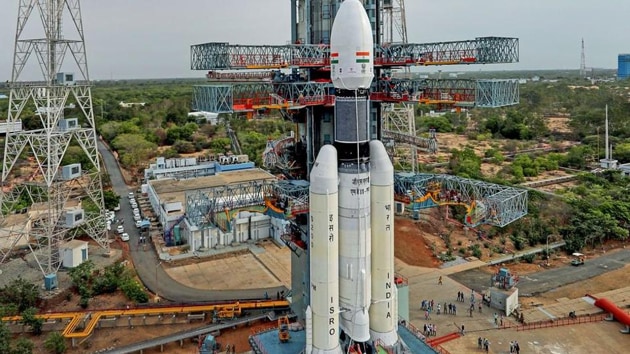Chandrayaan-2: ISRO performs first orbit raising manoeuvre
For this, the on-board propulsion system was fired to increase the perigee, or the point on the orbit closest to Earth, from 170km to 230km, the people added.
Two days after Chandrayaan-2 lifted off, the Indian Space Research Organisation (Isro) performed the first orbit raising manoeuvre on Wednesday afternoon to help the spacecraft get closer to the moon, according to people familiar with the developments.

For this, the on-board propulsion system was fired to increase the perigee, or the point on the orbit closest to Earth, from 170km to 230km, the people added.
India’s heaviest launch vehicle, the GSLV Mark III, placed the Chandrayaan-2 in a 169.7km x 45,475 km after launch. During the 16-minute journey to the Earth orbit, the launch vehicle “over-performed”, giving the spacecraft a boost of about 6,000km in the apogee, or the point on the orbit farthest from Earth.
“The GSLV Mark III successfully injected Chandrayaan-2 into an orbit 6,000km higher than the intended one. This way, the satellite team will have more life and fuel left for playing with manoeuvres,” Isro chairperson K Sivan said hours after the launch on Monday.
This boost meant that Isro scientists have to perform one less manoeuvre in the Earth orbit than what was planned earlier. According to the path chalked out for Chandrayaan-2 before the launch, the on-board propulsion systems were to be fired six times in Earth orbit – five times to raise the apogee and once to raise the perigee. Now, only four more “burns”, or firing of the propulsion system, will be needed on July 26 and 29, and August 2 and 6, to reach the final orbit of 233.2 x 143,953km.
“Although we have given the intended orbits for the next four manoeuvres, with each burn the numbers are likely to change. This is a very dynamic process. There is a team that recalculates the orbit every hour, there is round-the-clock simulation to plan for the next move. This is not like a launch vehicle in which we cannot make changes once launched. The spacecraft is in our control and we need to guide it to the intended orbit to escape Earth’s orbit,” said an official from Isro who asked not to be named.
With a final boost on On August 14, Chandrayaan-2 will escape Earth’s orbit and begin its seven-day journey towards the moon. The spacecraft is scheduled to reach the moon orbit on August 20.
With four more burns around the moon, Chandrayaan-2 will reach the final circular lunar orbit of 100x100km. It will take the spacecraft two hours to complete a revolution around the moon in this orbit.
After this, the lander-rover will separate and move to a 100x30km orbit. During this period, the optical high-resolution camera on-board will be turned on to scout for suitable landing site in the lunar south pole. The images taken will be transmitted to Earth and processed after which the landing site map will be uploaded to the lander-rover before its powered decent to the moon on Sept 7 at 2.58am.






